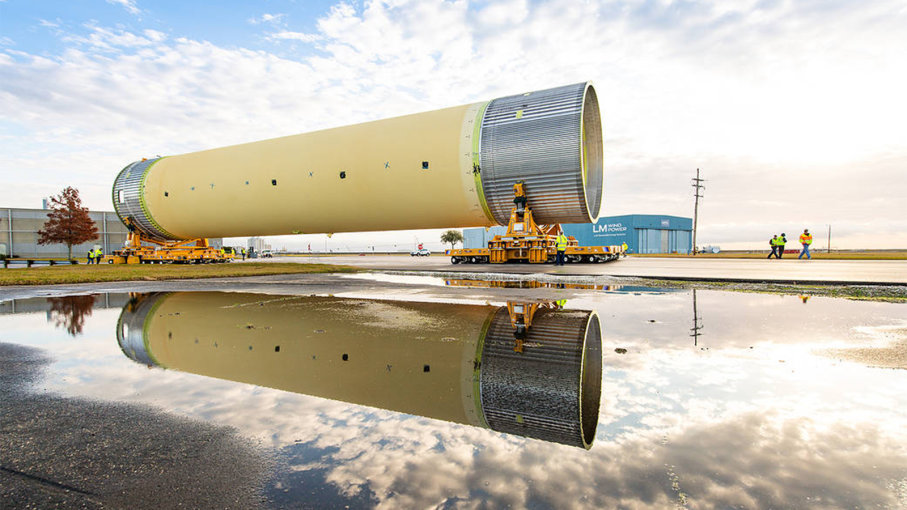NASA Preps to Send People Back to the Moon

NASA announced on Feb. 21, 2019 that it has selected a dozen payloads of scientific instruments and technology demonstrations that it plans to fly to the moon on private commercial rockets and landers. The missions, planned for 2019, are an early step toward achieving the space agency’s overarching goal to send astronauts back to the moon via commercial spacecraft in 2028.
NASA’s renewed focus on the moon reflects a December 2017 policy shift by the Trump administration, which decided that the space agency should return to the moon, which was last visited by Apollo 17 astronauts back in December 1972.
From the Moon to Mars
Previously, the Obama administration had abandoned a planned lunar mission, partly because of cost, in favor of focusing upon going to Mars in the 2030s.
Steve Clarke, the deputy associate administrator for exploration in NASA’s Science Mission Directorate, says that the missions flown by commercial lunar payload services (CLPS) will include a mixture of instruments and technology demonstrations. “We want to fly a mixture as much as we can, so they collectively can provide data to the science community and to the folks who are designing the next human lander,” he explains.
The scientific instruments sent to the moon will be “trying to characterize the lunar surface, looking for hydrogen molecules and actual traces of water or water ice in the soil, and looking for various other elements that are on the lunar surface,” Clarke says.
But those studies will do more than just add to our knowledge of Earth’s natural satellite. “We know there are volatiles at the poles on the Moon, and quite frankly, that water ice could represent rocket fuel,” NASA Administrator Jim Bridenstine said in a press release. “If we have the capability to generate rocket fuel from the surface of the Moon, and get them into orbit around the Moon, we could use that to build a fueling depot.”
On the technology side, one payload will include solar energy technology. “We’re looking to advance the science and engineering of solar cells to make them more efficient,” Clarke says. That will benefit space missions that are dependent upon solar energy, but the work will have applications back on Earth as well. Other technology being tested involves entry descent and landing (EDL) systems, which will help improve the design of future lunar landers — including the human lander that eventually will take astronauts to the lunar surface again.
Building a Lunar Orbital Station
NASA’s long-range plan also calls for building a lunar orbital station in the 2020s, which will serve as a platform both for observing the lunar surface and staging manned exploration missions. With instruments on the lunar surface as well as in orbit around the moon, “we’ll have two different vantage points,” Clarke explains.
Unlike the Apollo program, the commercial space industry will be heavily involved in the effort, transporting astronauts to the orbital station and down to the surface. The agency already has announced plans to work with space companies to develop reusable lunar landers. Those spacecraft could shuttle back and forth between the lunar orbital platform and the surface of the moon.
Dale Skran, executive vice-president of the National Space Society, a nonprofit group whose goal is to promote a spacefaring civilization, says in an email that NSS supports the NASA strategy. “The fundamental advantage of a lunar orbital station in the support of lunar exploration and development is that it can be a ‘gas station’ where reusable lunar landers dock and are re-fueled,” he says. “NASA’s recently announced human lander reference design, which features two reusable components (the ascent stage and a space tug) along with a ‘tanker’ to bring fuel to the lunar orbital station are a constructive but partial step in this direction.”
At this point, Skran says that putting “boots on the moon” in the near future no longer should be viewed as a desirable goal in itself, but rather as a means to further a larger plan of space colonization. “Humans on the Moon should grow organically out of what we are doing on the Moon, not appear as a ‘stunt’ in imitation of Apollo,” he explains. “Two potential goals for lunar return include mining oxygen to fuel future Mars trips and building a radio telescope on the ‘dark’ side of the Moon to take advantage of the unique radio quiet on the side of the Moon that faces away from the Earth. Both of these goals will almost certainly include humans on the lunar surface, but ‘boots’ are not the primary goal.”



 Creators of mankind
Creators of mankind Description of “Tall white aliens”
Description of “Tall white aliens” Where they came from?
Where they came from? About hostile civilizations
About hostile civilizations The war for the Earth
The war for the Earth “Tall white aliens” about eternal life
“Tall white aliens” about eternal life Video: “Nordic aliens”
Video: “Nordic aliens” Aliens
Aliens Alien encounters
Alien encounters The aliens base
The aliens base UFO
UFO Technology UFO
Technology UFO Underground civilization
Underground civilization Ancient alien artifacts
Ancient alien artifacts Military and UFO
Military and UFO Mysteries and hypotheses
Mysteries and hypotheses Scientific facts
Scientific facts


















